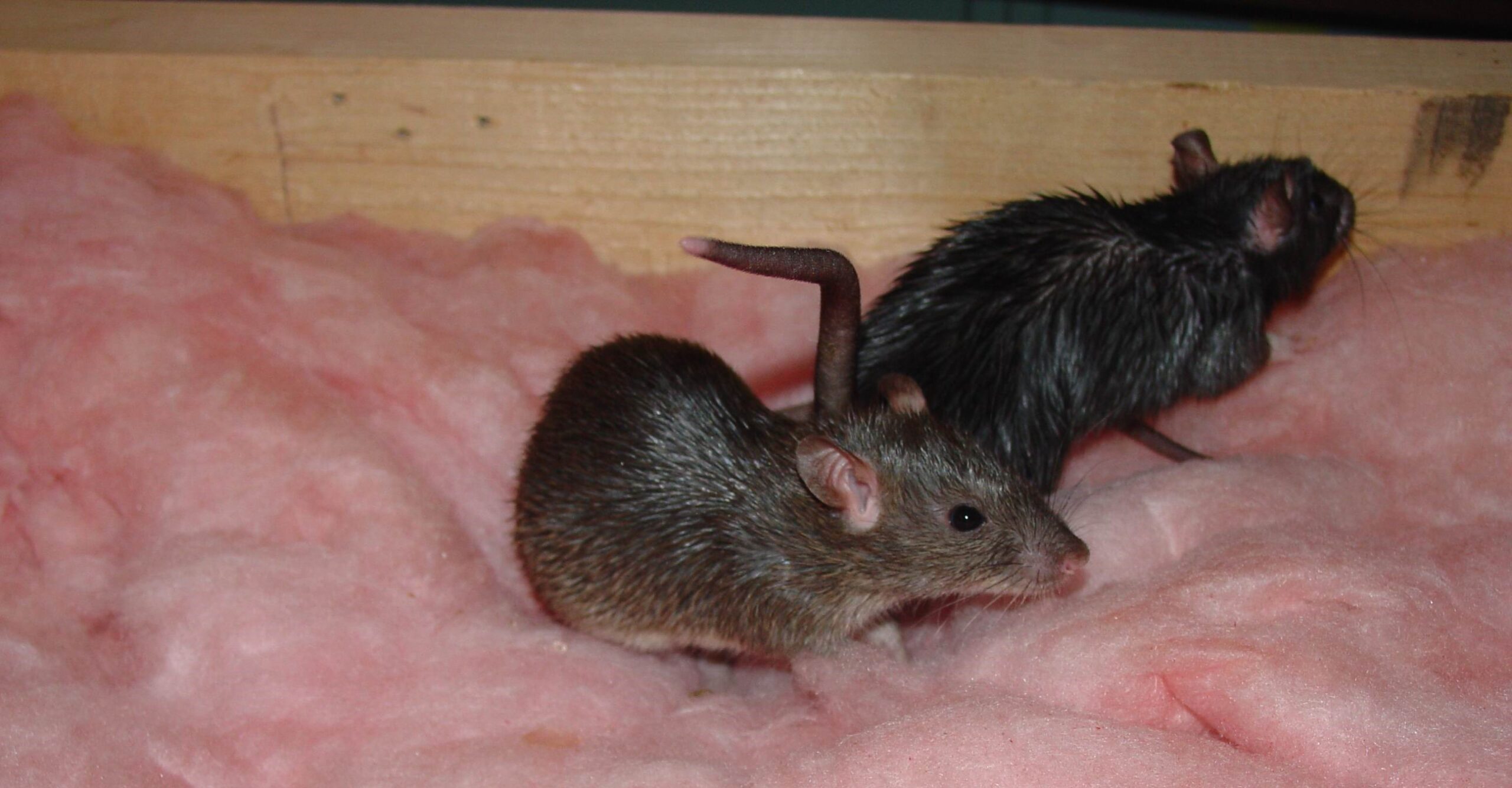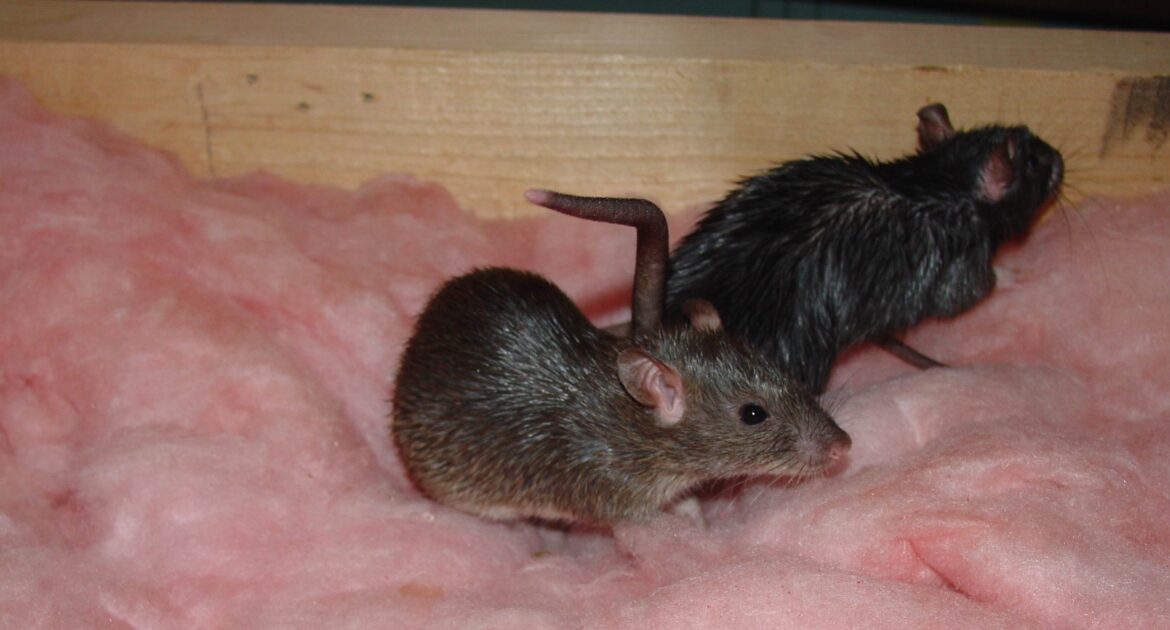Fall is a busy season for rats, and their behavior shifts as the weather cools down. If you’re in Plymouth and have noticed increased rodent activity around your home, you’re not alone.
Rats are preparing for the colder months, and understanding their seasonal habits can help you identify warning signs before a small problem turns into a major infestation. At Skedaddle Humane Wildlife Control, we’ve seen firsthand how rat fall habits can lead to seasonal rat activity and even fall rodent infestations.
But what exactly are rats doing in the fall? Mainly, they’re searching for food, warmth, and shelter as outdoor resources dwindle. This drive for survival often brings them closer to human homes.
Below, we’ll take a closer look at rat fall habits, the reasons behind their seasonal behavior, and how to protect your Plymouth home from fall rodent infestations.
Why Fall Sends Rats on the Move
When temperatures drop, rats have one goal in mind: preparation. Here’s what drives their movements during the fall season:
- Seeking Food Sources: During fall, natural food supplies like fruits, seeds, and insects decrease. Rats need to stock up and will venture out to find accessible food. Your home may provide all the resources they need, from crumbs on the floor to unsecured garbage or pantry items.
- Finding Shelter from the Cold: Rats are quick to seek out shelter as temperatures dip. Warm, enclosed spaces like attics, basements, and walls provide ideal nesting locations. The coziness of your home is the perfect solution to their seasonal needs.
- Reproducing in Safer Spaces: Contrary to popular belief, rats don’t only breed in spring and summer. They often reproduce through the fall and winter months, making the season’s infestations worse. Once inside your home, a pair of rats can turn into dozens if left unchecked.
Understanding these fall-specific needs makes it easier to identify and control rat activity before it escalates.
Signs of Fall Rodent Infestations in Plymouth
Rats are resourceful, so they often enter homes without their presence being immediately obvious. Keep an eye out for these common signs of a potential fall infestation:
- Droppings: Small, dark, rice-shaped droppings are a clear sign that rats are in your home. These droppings are often found along walls, in cupboards, or near food storage areas where rats are active.
- Gnaw Marks: Rats chew to keep their teeth sharp. Look for evidence on wood, wires, or food containers. This behavior can be dangerous because it can damage electrical wiring, increasing the risk of fires.
- Scratching Sounds: Rats are most active at night, and you may hear scratching or squeaking in walls or ceilings. These noises can give you important clues about where they are nesting or traveling within your home.
- Nesting Materials: Shredded paper, fabric, or insulation indicates that rats are building a nest. These nests are often hidden in dark, out-of-the-way spots like attics, basements, or behind large appliances.
- Odd Smells: A strong, musky odor often accompanies a rat infestation. This smell is due to the rats’ urine and droppings, and it’s usually strongest near their nesting or feeding areas.
If you notice these signs, it’s essential to act quickly. Rats can cause structural damage, contaminate food, and spread disease within your home.
Where Rats Hide in the Fall
Rats are clever when it comes to finding hiding spots. During fall, they’ll exploit any weakness in your home to gain entry. Common entry and nesting points include:
- Attics: Safe, dry, and warm, attics are a top choice for rat nests.
- Basements and Crawl Spaces: These provide protection from harsh outdoor conditions.
- Kitchen Areas: Easy access to food makes kitchens a popular destination for rodents.
- Walls and Floor Cavities: Rats can squeeze through openings as small as a quarter, making walls and floors great hiding spots.
- Garage or Storage Places: Unused items or clutter in garages or sheds can serve as perfect cover.
Sealing off these areas can go a long way in preventing rats from settling into your home.
How to Protect Your Home During Fall
To reduce the risk of a fall infestation, you’ll need to take proactive steps to make your home less appealing to rats. Here are some effective tips:
- Seal Gaps and Cracks: Inspect your home’s exterior for small gaps in walls, windows, and doors. Seal them with steel wool or caulk to block entry points.
- Secure Food Sources: Store food in airtight containers and regularly clean crumbs from floors and countertops. Don’t forget to secure dog or cat food, as it can attract rats too.
- Manage Waste Properly: Keep garbage in bins with tight-fitting lids and dispose of it regularly. Avoid leaving bags of trash outside where wildlife can tear into them.
- Declutter Spaces: Get rid of unnecessary items, especially in storage areas like basements, garages, and attics.
- Trim Plants: Keep bushes and trees trimmed to eliminate potential paths for rats to climb and enter through roofs or windows.
By making these changes, you can significantly reduce the chances of rats sneaking into your home this fall.
Why Rats Are Hard to Get Rid Of
Rats are incredibly resourceful and adaptable. They can squeeze into tiny spaces, reproduce quickly, and avoid traps or poison in ways that other wildlife cannot. Once they find shelter inside your home, they don’t leave willingly. Unfortunately, DIY methods are often unreliable and can make the problem worse by trapping rats inside your walls or harming non-target animals. Professional help is the most effective way to handle an infestation.
We specialize in safely removing rats while ensuring they don’t come back. Our humane one-way doors allow rodents to leave your home but prevent them from re-entering. This approach doesn’t just solve the immediate problem but also keeps your property secure long-term.
How Skedaddle Helps Prevent Fall Infestations
When you work with us at Skedaddle Humane Wildlife Control, we focus on more than just removing the rats you see in your home. We start with thorough inspections to figure out exactly how and where rats are getting inside.
Whether it’s a small crack in the foundation or gaps around doors and windows, we leave no stone unturned. Once we identify the entry points, our team uses expert exclusion methods to seal them off and reinforce vulnerable areas, preventing rodents from finding their way back inside.
For removal, we rely on our humane one-way doors, which allow rats to leave your home but stop them from coming back. This effective and compassionate approach quickly solves the problem without causing unnecessary harm to the animals.
With years of experience dealing with fall rodent infestations, Skedaddle Humane Wildlife Control in Plymouth has developed reliable methods to keep your home secure. Our skilled team combines expertise, care, and proven techniques to ensure your home stays rat-free through the changing seasons.
Protect Your Home from Fall Rats Today
As rats prepare for fall, don’t wait to protect your home. The control experts at Skedaddle Humane Wildlife Control are ready to help you handle rat fall habits before they turn into a full-scale infestation.
Our team in Plymouth uses safe, humane techniques to remove and prevent rats, giving you peace of mind all season long. Contact us today to request an estimate and take the first step toward a safer, rodent-free home.




